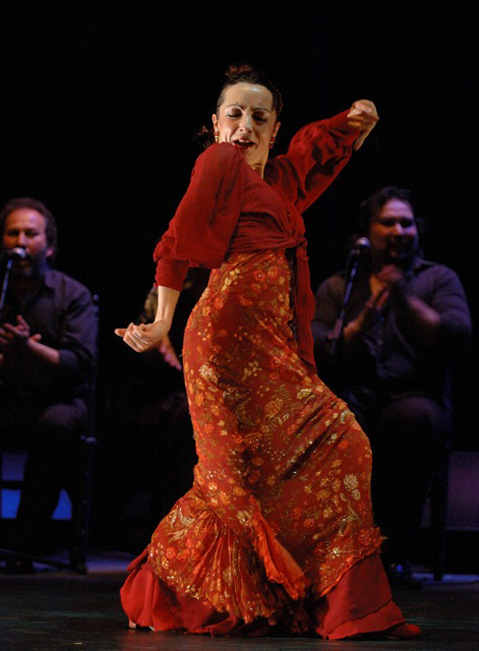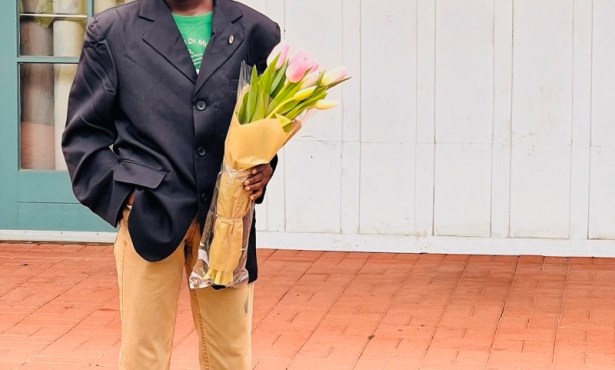The 11th Annual Flamenco Arts Festival
Pianist David Peña Dorantes Headlines
It’s been a dramatic summer for Spain: A thrilling victory at the World Cup in mid July boosted the sense of national unity, and Spanish cyclist Alberto Contador’s Tour de France win kept spirits soaring. Days later, news of Catalonia’s bullfighting ban increased tensions between that region and the rest of the country, while a weak economy wavered on the edge of recession.
Yet if Americans are pragmatists by nature, the Spaniards are poets, and they know a little drama is what makes life worth living. They understand that passion, soul—what they call duende—is born not from comfort, but from the alchemy of agony and ecstasy. How else could they have produced flamenco, an art form that’s as much about suffering as it is about celebration?

This Saturday, September 25, Santa Barbara gets a chance to witness true duende firsthand when superstar musician David Peña Dorantes and dancers Rosario Toledo and Joaquín Grilo visit the Lobero Theatre. Their show is Piano Abierto (Open Piano), and it marks the 11th consecutive year of the Flamenco Arts Festival (FAF).
If piano and flamenco don’t seem at first to go together, that’s because they haven’t—until Dorantes. The musician comes from a family of well-known flamenco artists in Andalusia, but when in his teens he began to combine traditional flamenco rhythms with his training in classical, jazz, and world music, he pushed the form into new territory. Today, he’s popular around the world and considered one of flamenco’s most exciting innovators.
Dorantes may not be a household name in Santa Barbara, yet many will have heard his music before. Thanks to the enduring influence of Spanish exploration and settlement in our region, Santa Barbara is home to a vibrant flamenco dance community. Instructors Linda Vega, Rose Marie Cruz, Kathy Cota, and others teach year-round and prepare students to perform Old Spanish Days, our annual celebration of Santa Barbara’s Hispanic heritage. Vega has used Dorantes’s music in her shows in recent years. Still, Piano Abierto will give even those familiar with Dorantes an unprecedented opportunity to hear him perform live (he has never played the West Coast), and to reconsider the mysteriously symbiotic relationship in flamenco between the music and the dance.
“In the USA, and especially in Santa Barbara, flamenco is dancing,” explained festival cofounder and president Alberto Pizano over coffee recently. “In Spain, it’s not unusual to have flamenco artists who are just musicians,” added his daughter Vibiana Pizano, FAF’s artistic director. “It’s part of our mission to increase the knowledge and appreciation of flamenco in all its forms.”
When the father/daughter team launched FAF in 1999, their goal was to bring the very best artists and companies to the Central Coast. Over the past decade they’ve offered performances, classes, and demonstrations with many of the biggest names in flamenco, among them Eva Yerbabuena, Israel Galván, and Javier Barón. This year, for the first time in their history, they’ve chosen a show where the emphasis is on the music rather than the dance, and the instrument in question isn’t even the guitar. Yet they’re confident Santa Barbara’s flamenco lovers won’t be disappointed.
In an email interview, Dorantes explained the relationship between dance and music in his work. “Dance is the dramatic representation of my music,” he wrote. “In most dance productions, music is designed to accompany the dancers, but in Piano Abierto the music is the element that directs. Dance enriches the music, dialogues with it, and derives energy from it until it becomes truly explosive.”
That intense dialogue between the dancer and the musician, and the fiery passion it produces, is at the heart of the art form. It’s the spark that makes flamenco flamenco, and it’s the hardest thing to capture in language—duende—a word without a good English translation. “When the heart twinges, when you close your eyes and your body trembles, you have attained and truly realized duende,” Dorantes wrote when I asked for his definition. Alberto Pizano gave his own interpretation. “In Zen Buddhism there’s a corresponding term, satori,” he said. “They believe that to really do something extremely well, you can’t think about it. If a samurai thinks about how he’s going to fight, he’s dead.”
Hopefully the stakes aren’t quite so drastic in flamenco, although the total immersion of the performer in his work can be just as serious. Flamenco seems to have originated in the 10th century during the transmigration of people from India to Spain, and to have become further established in the 15th century as part of Romani gypsy culture. It’s best known today by its later development in the region of Spain known as Andalusia. There’s plenty of debate over exactly where flamenco started and who can claim it, but no one disputes that flamenco is an expression of exile, pain, and suffering, as well as an expression of enduring spirit. Whether it’s dancing, hand clapping, playing guitar, singing, or playing the piano, performing flamenco requires much more than technical mastery. The artist has to be transported, and the hope is that the audience will go there with him.
Building a nationally recognized arts festival in Santa Barbara and keeping it afloat through the recession hasn’t been an easy ride for the Pizano family, but they’ve hung in there, and now they’re seeing FAF into its second decade. For all their careful planning, vigilance, and dedication, Alberto and Vibiana, her daughter Jaclyn, and their fellow hardworking boardmembers John and Jessica Haro know it all comes down to this: whether the artists they bring to Santa Barbara can convey duende, and transport audiences. Vibiana, who fell in love with flamenco as a little girl growing up in Los Angeles, remembers what duende feels like on stage. “There were times I was so into the dancing that I didn’t even hear the music,” she said. “I’d only come out of it when I heard the applause, and then I’d think, ‘What did I just do?’”
It may sound like an intensely personal experience, but Vibiana believes the audience can see it when it happens. “You can see the artist go into that state,” she said. “It makes it exciting.”
Dorantes referred to just such a state when he wrote to me about his goals as a performer. “I wish to demonstrate a means by which flamenco can be felt,” he wrote, “not just in its substance but also in its depth. I hope that those who are not familiar with flamenco will become enamored with this intense inheritance that my family has passed on to me.”
4•1•1
David Peña Dorantes, Rosario Toledo, and Joaquín Grilo perform Piano Abierto at the Lobero Theatre on Saturday, September 25 at 8 p.m. For tickets call 963-0761 or visit lobero.com.
The Flamenco Festival also includes master classes, demonstrations, and a post-show party. For the full schedule, call 967-4164 or visit flamencoarts.org.



